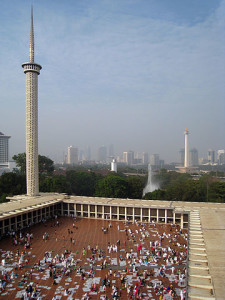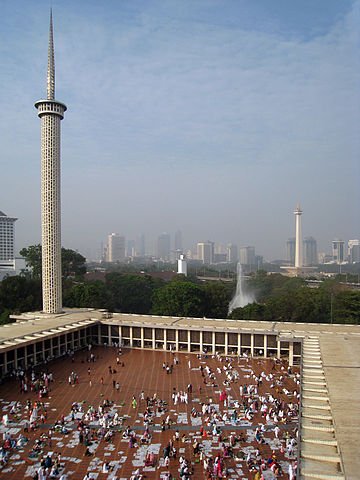 Southeast Asia’s Philippines, Vietnam, and Indonesia moved up in the 2015 Agility Emerging Markets Logistics Index as the non-BRICS (Brazil, Russia, India, China, and South Africa) nations showed resilience and flexibility in the year just past.
Southeast Asia’s Philippines, Vietnam, and Indonesia moved up in the 2015 Agility Emerging Markets Logistics Index as the non-BRICS (Brazil, Russia, India, China, and South Africa) nations showed resilience and flexibility in the year just past.
The latest index demonstrated a more balanced picture for growth, as dynamism in the Association of Southeast Asian Nations (ASEAN), Gulf Cooperation Council countries, Sub-Saharan Africa, and in the large, next-tier economies of Indonesia, Nigeria, Bangladesh, Mexico, and Pakistan, is balancing out the uneven performance of the BRICS powerhouses in recent years, said the report.
“A year ago, there was talk of an emerging markets meltdown and of a new ‘fragile five’ based on concerns about weakness in South Africa, Brazil, India, Turkey and Indonesia,” said Essa Al-Saleh, president and CEO of Agility Global Integrated Logistics. “Emerging markets as a group turned out to be far more resilient—even vibrant—than expected despite continued sluggishness in the global economy.”
The BRICS nations have accounted for much of the growth and investment in emerging markets and have dominated the index. But Saudi Arabia climbed to No. 2 in the 2015 Index, ranking behind only China, which has 47 times the population and 12.5 times the economic output.
Next-tier economies Indonesia (No. 4 in the index), Nigeria (27), Bangladesh (28) and Pakistan (25)—all with populations topping 100 million—climbed in the rankings. The other large non-BRICS market—Mexico—held steady at number 9.
The 2015 Agility Emerging Markets Logistics Index is an annual data-driven ranking of 45 emerging economies based on their size, business conditions, infrastructure, and other factors that make them attractive for investment by logistics companies, air cargo carriers, shipping lines, freight forwarders, and distribution companies.
Other findings show that Gulf states UAE, Qatar, and Oman have the best “market compatibility”—the most ideal business conditions—followed by Uruguay, Saudi Arabia, and Morocco.
UAE, Malaysia, China, Oman, Saudi Arabia, and Chile led in “connectivity,” indicating they have the best infrastructure and transport links.
The Philippines climbed three spots (to no. 16) in the data portion of the Index—after jumping nine spots in the 2014 index. The country also improved its standing among supply chain executives surveyed. They pushed the Philippines up five spots (to no. 15) among countries they said will emerge as a major logistics market.
Russia’s growing economic isolation has damaged its appeal to logistics and supply chain professionals. More than 75% of survey respondents said they were pessimistic about Russia’s prospects.
India continues to divide logistics and supply chain executives. They ranked India as the no. 2 choice to emerge as a major logistics market and ranked it relatively high—no. 17—among countries least likely to become a major logistics market.
Faster growing trade routes
The fastest growing trade lanes linking emerging and developed markets were U.S.-Vietnam (up 42.7% by volume) and Cambodia-EU (up 41.9%) for air cargo; and Ukraine-EU (up 35.8%) and EU-Egypt (up 23.2%) for ocean shipments.
But for 2015, trade flows between Asia’s emerging markets and other emerging markets are the ones that had logistics professionals most upbeat in the survey.
For 2015, the International Monetary Fund forecasts average growth for the 45 countries featured in the Index at 4.57%.
“The factors driving growth are increases in population, size of the middle class, spending power and urbanization rates, along with steady progress in health, education and poverty reduction,” Al-Saleh said. “That’s why we remain optimistic about emerging markets and continue to see them on an upward trajectory.”
John Manners-Bell, chief executive of logistics research firm Transport Intelligence (Ti), which compiled the Index, said: “Five years after the global recession, prospects for all economies, developed and emerging, are still unclear. Economic fragility, a falling oil price and increasing security concerns in Africa and the Middle East have created uncertainty.”
He added, however, that despite the challenges, “interest remains high in these volatile markets as indicated by increased infrastructure investment, expanding international trade and increased domestic demand. Global manufacturers, retailers and their logistics service providers need to remain cognizant of the shifting dynamics if they are to exploit the significant opportunities which exist.”
According to the 2015 index, the top 20 emerging logistics markets are in this order: China, Saudi Arabia, Brazil, Indonesia, India, UAE, Russia, Malaysia, Mexico, Turkey, Chile, Qatar, Oman, Thailand, South Africa, Philippines, Morocco, Kazakhstan, Vietnam, and Uruguay.
Photo: Gunawan Kartapranata





